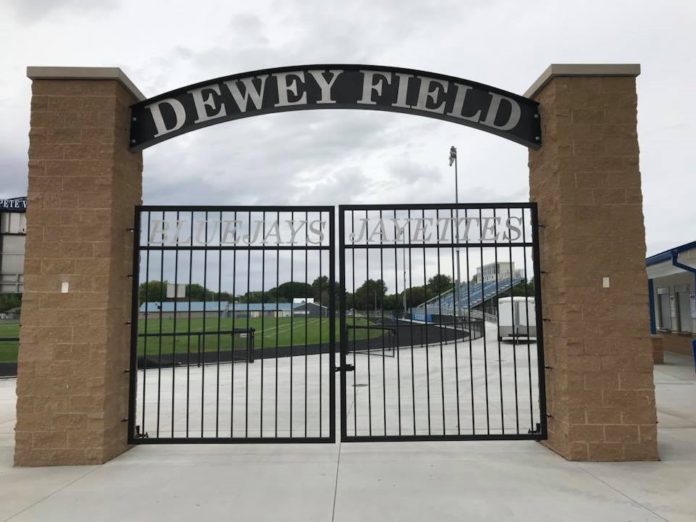The start of practices for fall varsity sports is Monday, and while hopes will be high in most places, in others the goals and aspirations will be more restrained.
Perry is an example of the latter, especially after a 2018-2019 season that, in the three team sports most observers consider “big” for both the boys and girls, the results bordered on utter disaster from a competitive standpoint.
Die hard partisans and apologists will be angered and uncomfortable to see the issue brought to light for public discussion but, from a purely win-loss standpoint, the past school year was poor on an almost historical level.
The football team went 0-9, the boys basketball squad 0-20 and the baseball team 0-24, making Perry the first school in Iowa in at least the past five years to go without a single victory in the three chief varsity boys sports in the same school year. The volleyball team was 7-32, the girls basketball unit 1-20 and the softball team 5-24.
Volleyball has not won a Raccoon River Conference game since 2015. The Jayette cagers are a combined 1-26 over the past two years in league play, with the softball squad a combined 1-27 in the same span.
That a team is young and inexperienced (as if this does not also effect other schools’ athletic programs) is one of the more common excuses or explanations tossed about. There are a myriad of others.
There are worthy arguments on both sides of each issue facing the state of the varsity sports. Some say that the point of extra-curricular sports is to provide opportunities for growth and enrichment and that winning should not be the sole focus. This is certainly a valid point.
But then why keep score? If someone is losing, that means someone else is winning. Former New York Jets (and now Arizona State) head coach and NFL Hall of Fame member Herm Edwards was famously recorded as emphatically saying, “We play to win the game.”
There has been recent discussion by the five Des Moines metro schools (East, Hoover, Lincoln, North and Roosevelt) that they are at an unfair advantage when playing the suburban schools. Johnston and Urbandale are considered in the mix, but the unspoken truth is that the fingers point chiefly at Valley and Dowling Catholic.
One of the arguments is that the metro schools are unfairly plagued by socioeconomic problems, as if student athletes at Roosevelt are somehow inherently inferior to those at Valley.
As a recent report on WHO-TV noted, more than 70 percent of metro students — a rate similar to Perry’s — qualify for free or reduced meals, indicating the athletes come from families that struggle financially. This prevents the sons and daughters from those schools from playing in out-of-season leagues or attending numerous instructional camps held for each sport, or so the complaint goes.
There is considerable merit to the argument. Certainly a parish family that can afford tuition of $8,226-plus-fee for the upcoming school year (the rate is $11,512 plus fees for non-participating families) at Dowling Catholic can more easily afford to send Johnny to upscale camps and haul him all over creation for AAU teams more readily than the family who needs government aid to have their children fed at school for what is often their best meal of the day.
There is also little doubt that Perry does not compare favorably by those standards to ADM, Ballard, Bondurant-Farrar, Boone, Carlisle, Carroll or Winterset, the other teams in the RRC, and it will not improve next year when Gilbert and North Polk join the conference.
What it does not mean is that this should make Perry unable to offer a challenge or that a Perry boy or girl is somehow inferior to others.
The whole “minority issue” is occasionally bandied about. With roughly 50 percent of the PHS student body non-white, the participation numbers make Perry, a class 3A school in most sports, have an actual pool of active student-athletes more in line with a mid-size 2A school at best because minority students are less likely to join a sport. So it is said.
But the minority participation rates do not appear to hamper the metro schools nor, to hear the various Perry coaches speak, do they affect PHS. A look at any varsity roster shows plenty of minority involvement and though some sports draw a higher rate than others, all are showing improvement.
Football draws much of the concern. The same WHO-TV report noted metro schools are a combined 0-122 in recent years against their suburban counterparts, with most games lost by a wide margin.
Economic and ethnic factors again arise. Even the most unbiased observer would have to admit the number of 6-foot or taller, 200-pound or bulkier Hispanic boys at PHS are very few. However, there are just as few white boys that size walking the halls. This is not the fault of the students. The community just hasn’t produced a bunch of big, strapping lads.
Physical conditioning and strength training can help even the field in most sports, certainly in football, and Perry is making slow but steady progress in that direction after suffering a visibly clear deficit for years.
There is no quick fix. The situation is not suddenly going to turn around. There might be some improvement, and that will, of course, be welcome, but to change the overall direction the Perry ship is sailing is going to take time and a commitment from the community.
How? Ask any coach: Youth sports and much, much more dedication to such programs.
Tomorrow: The remedy is clear, but will it be acted upon?

















